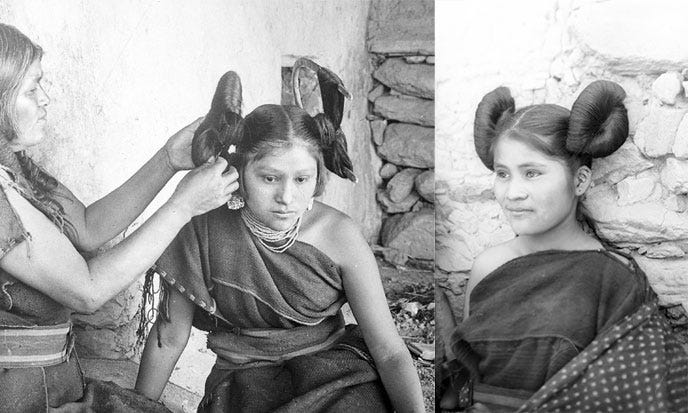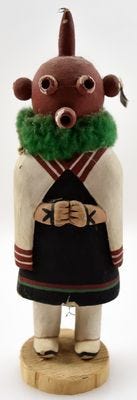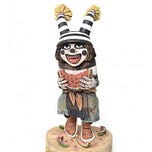Towards the latter half of the 5th grade, the school opened up a computer lab, and I was allowed to visit it two times a week with Mrs. Haney. The teacher was Mr. Curran-Perkins, my 4th-grade teacher’s husband. He built a fantastic lab with Macintosh computers and in the center of the room, there was a dot matrix printer with the peel-off holed paper on the sides. Going to the lab was my favorite part of the week because what we did in there was so interesting. He taught us a programming language called LOGO, where a little turtle went around drawing shapes when given commands. I drew a house and made some music. Our teacher printed our houses out for us so we could take them home and I hung mine up above my desk. When I went to sleep at night, I would look at it and try to figure out how the image on my computer screen somehow teleported across the room to the printer. If we weren’t using LOGO, we were doing adventure games, and the time during that class went by too quickly. Unfortunately, unbeknownst to me, I wouldn’t touch a computer again until I reached high school. The seed, however, was planted. I knew that I liked them, and there was something special about them that was meant for me.

I started learning more about Navajo traditions and superstitions. There was a shared bathroom for all of the 3rd-5th graders and one day when I was walking towards the bathroom to use it, I heard a blood-curdling scream come out of it, and a girl ran down the hallway screaming, “yee naaldlooshii!! yee naaldlooshii!!”. I had no idea what it meant at the time, but pandamonium began, and it was like a domino effect. Suddenly children all around me were crying and screaming. Buses came and got the children and took them home, and I was sent home for the day completely baffled. I asked other children what was going on, and they told me to be quiet and never to speak about it. For those of you who have read Harry Potter, yee naaldlooshii are basically Voldemorts or Minecraft Endermen. If you engage with them too long, you die. It was my first encounter with a reaction of this kind, but it wouldn’t be the last. The older we became, the frequency of these occurrences increased.
We had school assemblies where both Navajo and Hopi traditions were common. Long ago, these were warring tribes, but the Hopi had their island of reservation that was inside of the Navajo reservation on majestic mesas and there’s been lasting peace. You can only visit one of these mesas as an outsider. The Hopi people have incredibly beautiful clothing, weaving, and dolls, but some of their ceremonies are a thing of nightmares. They are designed to be scary. They have something called a Nataska, which is an uncle of the Ogre people and is a device used to scare children into being always on good behavior. They go door to door asking for gifts of food and if they are not satisfied with the gifts or the children’s actions they would kidnap, kill, and eat you. Naturally, they were always satisfied and children never ended up on their dinner plates, but this was a long-standing tradition that also was played out at school. I was mortified when the Nataska came to school. Their face masks were large and scary, they carried a bow and a knife, along with a potato looking sack. Their face masks clacked and made knocking noises which added to the fear and now and then they’d gather a child from the crowd, stuff them in a sack and then that child would disappear until later in the day. The child stuffed in the sack screamed in terror. The children around that child screamed and I was always thankful they never chose me.
Hopi stories, traditions, and culture are taught to each generation through storytelling, dances, and dolls called kachinas. Some refer to the kachina as a religion. There are many kachinas, but the most important would perform during our school ceremonies. We had dancers that looked like hummingbirds, snakes and buffalo. We also had clowns. Two clowns, I remember the most, the mudhead clowns and the Koshare would provide comic relief between stories through songs about spirits, animals, rain, and crops. It is difficult to find photos of humans dressed in these kachina costumes as it is considered rude to photograph them and that it steals their spirits. Generally, a lot of Navajo and Hopi people do not enjoy being photographed. There are exceptions, but I’ve found it to be rare. Below are some kachina dolls that you’ll have to imagine as people dancing. I included a photo of a beautiful Hopi girl getting her hair done into buns. Navajo women typically had their buns on the back and only one of them. Some Hopi traditions seeped over into Navajo culture, so you’ll see some of their dolls have similar themes.
I grew quite fond of Hopi culture. For one, it was quite beautiful and full of rich history and traditions and two, they were generally peaceful people who had their lands taken from them and were forced to be occupied by the largest native tribe in the country - the Navajo. Through U.S. government intervention, they had much of their grazing lands and ancestral lands removed from them and now they have a small piece left surrounded by a tribe that holds similar but different values. While peaceful, there are still lots of tensions to this day over a variety of issues, but they remain dedicated to their distinct culture, which I’ve always admired.
The more I got to know Hopi friends, the more I understood why some children mistreated me. I was in a place I was never meant to be and the wounds of these children’s parents and grandparents were still open. These children that I went to school with had living grandparents who were forcibly kidnapped by government officials and sent to boarding schools. They were watching their culture and history drain away as kids grew up and moved to more urban areas and adopted the types of culture they saw on tv and music videos. Their languages were disappearing. I knew this wasn’t my fault, but I also was aware that people who looked like me caused a lot of this pain. I was an outlet for the ills of past sins.
People often wonder how I became libertarian, and I think just like the seeds planted by working with a computer two days a week for six months, seeing and experiencing the aftermath of gross government intervention set me on this path early. What our country and settlers did to our native people was atrocious and what some of those tribes did to their own people was just as terrible. The Navajo tribe for example has its own government complete with a president and all the various branches you’d expect a government to have including its own police force. The tribe decides what is best for its people and often what it thinks is best, is actually what is worst. For example, tribal members can not own land on a reservation. So, there’s no incentive to create permanent structures. A lot of people live either in traditional dwellings or trailers that are falling apart. It is difficult to start a business because you usually can’t get a loan and it is unclear where you’d put that business if you had one. Every resource on the land is for all of their people and nobody can really rise above anyone else, so they all end up poor except the very few who are in charge. Alcohol is also banned, but the amount of alcoholism is incredibly high. Members of the tribe who are unemployed get regular checks from the government which creates perverse incentives not to work or start businesses. We would try to avoid going to Gallup after these paydays because often we’d see men lying everywhere on sidewalks, under bridges, stumbling across roads drunk or blacked out due to drinking. Depression, suicide, and drug use are all incredibly high. Our schools were the best I had ever experienced. The reason my mother and grandparents were there, was it was the best paying teacher job in the nation. They attracted amazing talent. So, why was it that people who lived there were in this predicament if everyone became highly educated. Well, the truth is, their talent leaves and they leave behind the people who are most fragile. Some talent is retained, but not at a rate that helps move the needle and their government continues to exploit this as an opportunity.
I learned pretty early on that it isn’t enough to feed a man, as that alone doesn’t give him pride. There was something missing.








